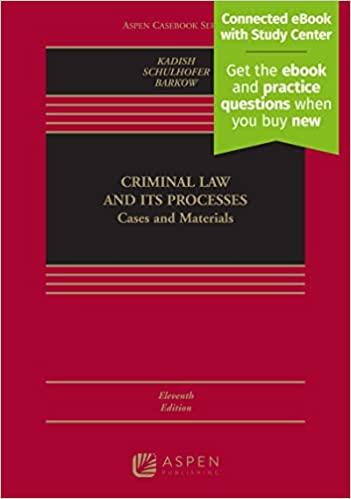Question
The US prison population seems to be in slow decline. Data reported in this chapter suggest as much. Not all states have seen shrinkages, but
The US prison population seems to be in slow decline. Data reported in this
chapter suggest as much. Not all states have seen shrinkages, but the ma-
jority have. Indeed, four statesNew Jersey, New York, Rhode Island, and
Californiahave reduced their prison populations by 20 percent. Even some
Southern states, which are traditionally harsh on crime, have reduced their
prison populations. Mississippi and South Carolina have reduced their prison
populations by 18 and 11 percent, respectively.
What is behind the reductions? One obvious answer is the high cost of
incarceration. In response, most states have adopted reforms intended to
reduce mandatory minimum sentencing. For example, California voters ap-
proved initiatives in 2012 and 2016 to reduce prison populations. The 2012
initiative reformed the state's punitive three-strikes law. The 2016 initiative
expanded parole eligibility and placed limits on trying juveniles as adults. Vot-
ers in the Golden State also authorized changes in the way certain offenses
were classified.
At its peak in 2006, California had nearly 175,000 inmates behind
bars in the state's 33 prisons. In 2008, it was ranked second in the nation
in prison spending. Many of its prisons exceeded capacity by as much as
300 percent. These developments led Governor Arnold Schwarzenegger to
declare a "Prison Overcrowding State of Emergency." The deplorable con-
ditions in California's prisons prompted a three-judge panel to decide they
violated the Eighth Amendment's prohibition against cruel and unusual pun-
ishment. And in 2011, the US Supreme Court, in Brown v. Plata, affirmed the
lower court's decision and ordered California to reduce its prison capacity
by 137 percent, which translated into about 33,000 inmates. In response,
Governor Jerry Brown signed into law the California Public Safety Realign-
ment Act. The act moved several felons from state prisons to state jails,
changed parole rules, and reformed the way in which probation and parole
technical violations were dealt with.
Some would say California did what it had to do. But what effect did
realignment have on crime? Wouldn't releasing inmates, especially those
convicted of serious crimes, lead to a surge in crime? These are empirical
questions. In an interesting study, Jody Sundt and her colleagues compared
crime trends in California to those from the population of all 50 states.
The results of various statistical models revealed that realignment had no
effect on crime in multiple time periods. This prompted the researchers
to conclude:
Significant reductions in the size of prison populations are possi-
ble without endangering public safety. Within just 15 months of its
passage, realignment reduced the size of the total prison population
by 27,527 inmates, prison crowding declined from 181 percent to
150 percent of design capacity, approximately $453 million was
saved, and there was no adverse effect on the overall safety of
Californians. With a mixture of jail use, community corrections,
law enforcement and other preventive efforts, California counties
have provided a comparable level of public safety to that previously
achieved by state prisons.
In fairness, few studies have examined the effects of realignment. It is
likely that more time and study are necessary before we can conclude with
certainty that California's approach to reducing prison populations was suc-
cessful. But other researchers, such as Magnus Lofstrom and Steven Raphael
at the Public Policy Institute of California, have reached similar conclusions,
so perhaps it is high time to get "smarter" with incarceration.
1. Should other states replicate California's realignment initiative?
Why or why not?
2. How should parole be reformed to reduce prison populations?
3. Will a new presidential administration resurrect tough-on-crime
policies and lead to future surges in the incarcerated population?
Step by Step Solution
There are 3 Steps involved in it
Step: 1

Get Instant Access to Expert-Tailored Solutions
See step-by-step solutions with expert insights and AI powered tools for academic success
Step: 2

Step: 3

Ace Your Homework with AI
Get the answers you need in no time with our AI-driven, step-by-step assistance
Get Started


